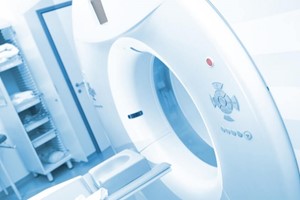Burns are one of the most common injuries suffered by Australians and one of the top causes of death in children under four. While survival rates for burns patients have improved substantially, treating pediatric burns remains challenging, especially with the rise of multi-drug resistant bacteria.
Now, new technology from the University of South Australia could revolutionize burns treatments in children by using stimuli-responsive dressings that safely reduce infection and stimulate healing.
This research builds on the recent publications by the research team in Acta Biomaterialia and Biomedicines journals describing antimicrobial efficacy of ultra-small silver antiparticles against wound biofuels.
The advanced silver nanoparticle hydrogel-coated dressing developed by a research team at UniSA’s Future Industries Institute (Dr Zlatko Kopecki, Professor Allison Cowin and Professor Krasimir Vasilev) will deliver an ‘on demand’ release of ultra-small silver nanoparticles that can safely break down antibiotic-resistant bacteria and promote wound repair.
The treatment innovation lies in a delivery system that responds to changes in pH and temperature, activating only when infection is present.
Lead researcher, UniSA’s Dr Zlatko Kopecki, says the novel treatment could significantly change the clinical management of burn infections.
UniSA’s Professor Vasilev says the new technology will be a gamechanger for burns management.
In Australia, approximately 50,000 burns-related hospital admissions are recorded per year, with young children particularly at risk. Scald burns (65 per cent) or flame burns (20 per cent) are the most common burn-related injuries for children aged four years and under.
Nearly 75 per cent of all scalding burns are preventable.
Research partners Dr. Bernard Carney and Dr. Andrew May, of the Burns Unit of the Women’s and Children’s Hospital (WCH), are working in partnership with UniSA to better understand pathogens present in child burns and develop targeted therapy approach.
“Every year, the WCH’s Burns Unit treats around 600 children suffering from burns, with scalds making up a significant proportion of these injuries,” Dr May says.
“Most commonly these incidents happen at home. Children under five are most at risk because they like to mimic adult behaviour, which means that hot drinks, taps, and saucepans are all big danger zones.
“Despite modern advances in burns surgery, infection remains a big challenge for these vulnerable children and so topical silver treatments are used widely to combat this.
“We are pleased to be collaborating with the great minds at UniSA in bringing new silver treatments to give children the greatest opportunity to recover from burns and live their best lives.”
Danielle Ellis













